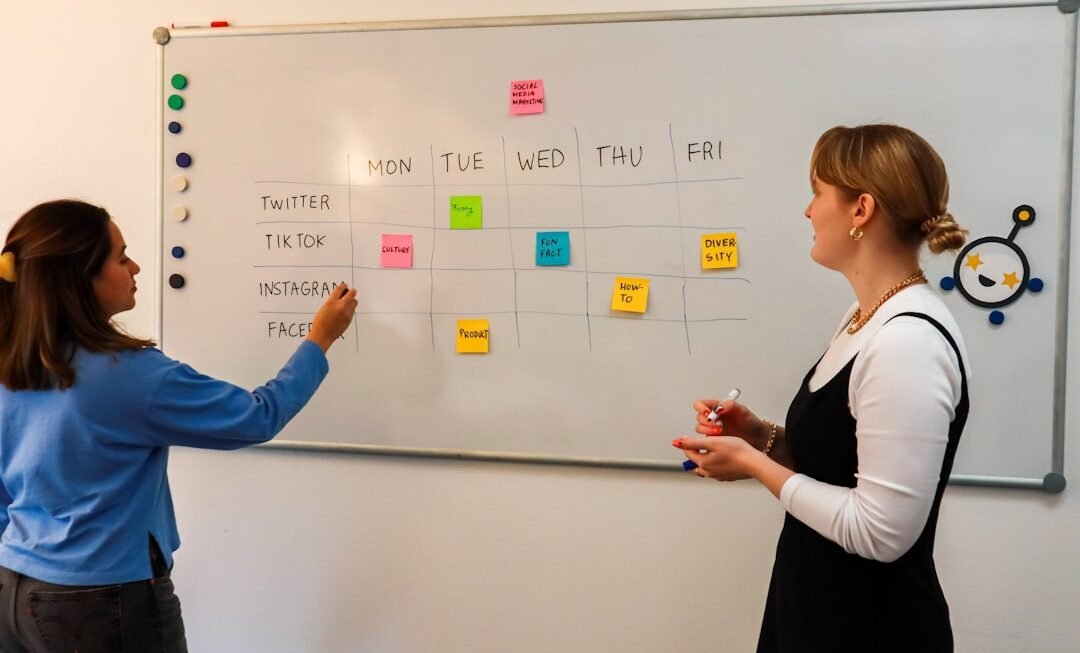Understanding your target audience and market is essential when developing an online course website. It is imperative to identify your intended audience, their specific requirements, challenges, and expectations from an online course. Conducting thorough market research and collecting data on potential students can assist in tailoring content to address their particular needs.
This research can be accomplished through various methods, including surveys, interviews, and analysis of online trends and discussions related to the course subject matter. After gaining a comprehensive understanding of your audience, creating buyer personas can be beneficial in representing different segments of your target market. These personas enable the personalization of content and marketing strategies to better resonate with each group.
For instance, if developing a course on digital marketing, distinct buyer personas might be created for small business owners, marketing professionals, and entrepreneurs. By understanding the demographics, psychographics, and behavioral patterns of your audience, you can produce content that directly addresses their needs and interests.
Creating Engaging and Valuable Content
Catering to Different Learning Styles
When creating content, it’s essential to consider the diverse learning styles of your audience. Some students may prefer visual learning through videos and infographics, while others may prefer reading and taking notes. By offering a variety of content formats, you can cater to different learning preferences and ensure that all of your students can effectively absorb the material.
Creating an Engaging Learning Environment
In addition to providing valuable content, it’s vital to make your course engaging and interactive. This can be achieved through discussion forums, live webinars, group projects, and other collaborative activities that encourage participation and foster a sense of community among your students. By creating a dynamic learning environment, you can increase student satisfaction and retention.
The Key to Student Success
By providing valuable content and creating an engaging learning environment, you can set your students up for success. This, in turn, can lead to increased student satisfaction, improved course completion rates, and a stronger reputation for your online course website.
Choosing the Right Platform and Tools
Choosing the right platform and tools for your online course website is crucial for delivering a seamless learning experience. There are many options available, including learning management systems (LMS), website builders, and e-learning platforms, each with its own features and capabilities. It’s important to consider factors such as ease of use, customization options, scalability, and integration with other tools when selecting a platform for your course.
When choosing tools for creating content, consider the specific needs of your course and the preferences of your audience. For example, if you are creating a course with a heavy emphasis on video content, you may want to invest in a high-quality camera and video editing software to ensure professional-looking videos. Similarly, if your course involves interactive elements such as quizzes and assessments, you’ll need to choose a tool that supports these features.
It’s also important to consider the technical requirements of your audience when selecting tools for your course website. Ensure that the platform and tools you choose are accessible across different devices and operating systems to accommodate a wide range of students. By carefully selecting the right platform and tools for your online course website, you can provide a user-friendly experience that enhances the learning process for your students.
Implementing Effective Marketing Strategies
Implementing effective marketing strategies is essential for attracting students to your online course website. This can include a combination of inbound and outbound marketing tactics to reach potential students and drive enrollment. Inbound marketing strategies such as content marketing, search engine optimization (SEO), and social media marketing can help you attract organic traffic to your website by providing valuable content and engaging with your target audience.
Outbound marketing tactics such as email marketing, paid advertising, and partnerships can also be effective in reaching a wider audience and driving conversions. By leveraging these strategies, you can increase awareness of your course and encourage potential students to enroll. It’s important to create a comprehensive marketing plan that outlines the tactics you will use to promote your course website and reach your enrollment goals.
In addition to attracting new students, it’s important to retain existing students through ongoing engagement and communication. This can be done through email newsletters, social media updates, and exclusive offers to keep students informed about new courses or updates on existing ones. By implementing effective marketing strategies, you can attract new students while retaining existing ones to build a loyal student base for your online course website.
Providing Excellent Customer Support
Providing excellent customer support is essential for ensuring a positive experience for your students on your online course website. This can include offering multiple channels for support such as email, live chat, and phone support to address any questions or issues that may arise during the learning process. By providing responsive and helpful customer support, you can build trust with your students and encourage them to continue their learning journey with your courses.
In addition to offering direct support channels, it’s important to provide comprehensive resources such as FAQs, tutorials, and knowledge bases to help students find answers to common questions on their own. This can empower students to troubleshoot issues independently and reduce the need for direct support interactions. By providing self-service resources, you can streamline the support process and improve the overall experience for your students.
Another important aspect of customer support is gathering feedback from your students to identify areas for improvement and address any pain points they may have. This can be done through surveys, feedback forms, or direct communication with students to gather insights on their experience with your course website. By actively listening to your students’ feedback and making improvements based on their input, you can demonstrate a commitment to providing excellent customer support and continuously improving the learning experience for your students.
Monitoring and Analyzing Performance
Quantitative Data Analysis
By regularly monitoring these metrics, you can gain insights into the effectiveness of your courses and make data-driven decisions to optimize performance.
Gathering Qualitative Feedback
In addition to quantitative data, it’s essential to gather qualitative feedback from students through surveys or interviews to understand their experience with your courses in more depth. This provides valuable insights into areas such as course content, user experience, and customer support that may not be captured by quantitative metrics alone.
Informing Future Decisions
Analyzing performance data can also help you identify trends and patterns that can inform future decisions about course development, marketing strategies, and customer support initiatives. For example, if you notice a drop in enrollment rates for a particular course, you can investigate the reasons behind this trend and make adjustments to improve its performance. By continuously monitoring and analyzing performance data, you can make informed decisions that drive the success of your online course website.
Continuously Improving and Updating Your Course Website
Continuously improving and updating your course website is essential for staying competitive in the rapidly evolving online education landscape. This can include updating course content to reflect the latest industry trends and best practices, adding new courses to expand your offerings, or enhancing the user experience through website design updates or new features. By staying proactive in improving your course website, you can provide ongoing value to your students and maintain their interest in your courses.
In addition to updating course content, it’s important to regularly review the performance of your marketing strategies and make adjustments as needed to reach new audiences and drive enrollment. This can involve testing new tactics such as different ad creatives or targeting criteria to optimize the effectiveness of your marketing efforts. By staying agile in your marketing approach, you can adapt to changes in the competitive landscape and continue attracting new students to your courses.
Furthermore, staying up-to-date with advancements in technology and educational best practices is crucial for delivering a modern and effective learning experience for your students. This can involve adopting new tools or platforms that enhance the functionality of your course website or integrating emerging technologies such as virtual reality or artificial intelligence into your courses. By continuously improving and updating your course website, you can stay ahead of the curve in online education and provide a cutting-edge learning experience for your students.
In conclusion, understanding your audience and market is crucial for creating an online course website that resonates with potential students. By creating engaging and valuable content that caters to different learning styles, choosing the right platform and tools for delivering a seamless learning experience, implementing effective marketing strategies to attract new students while retaining existing ones, providing excellent customer support to ensure a positive experience for your students, monitoring and analyzing performance data to make informed decisions about optimizing your courses’ performance, continuously improving and updating your course website to stay competitive in the rapidly evolving online education landscape; you can build a successful online course website that provides real value to your students while achieving your business goals.












